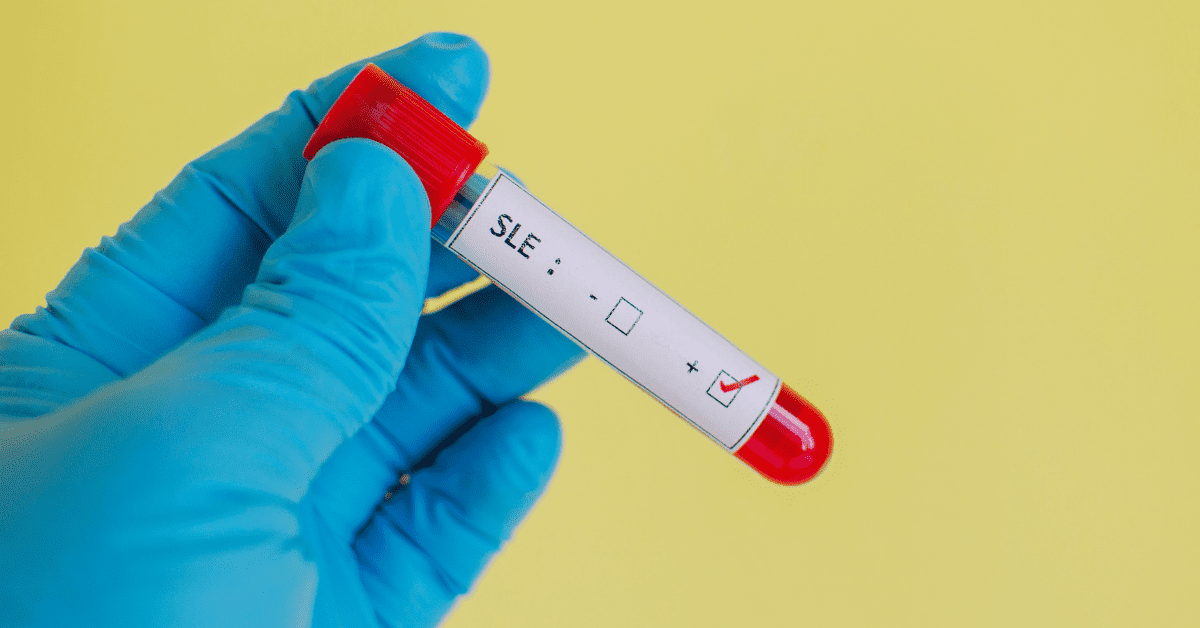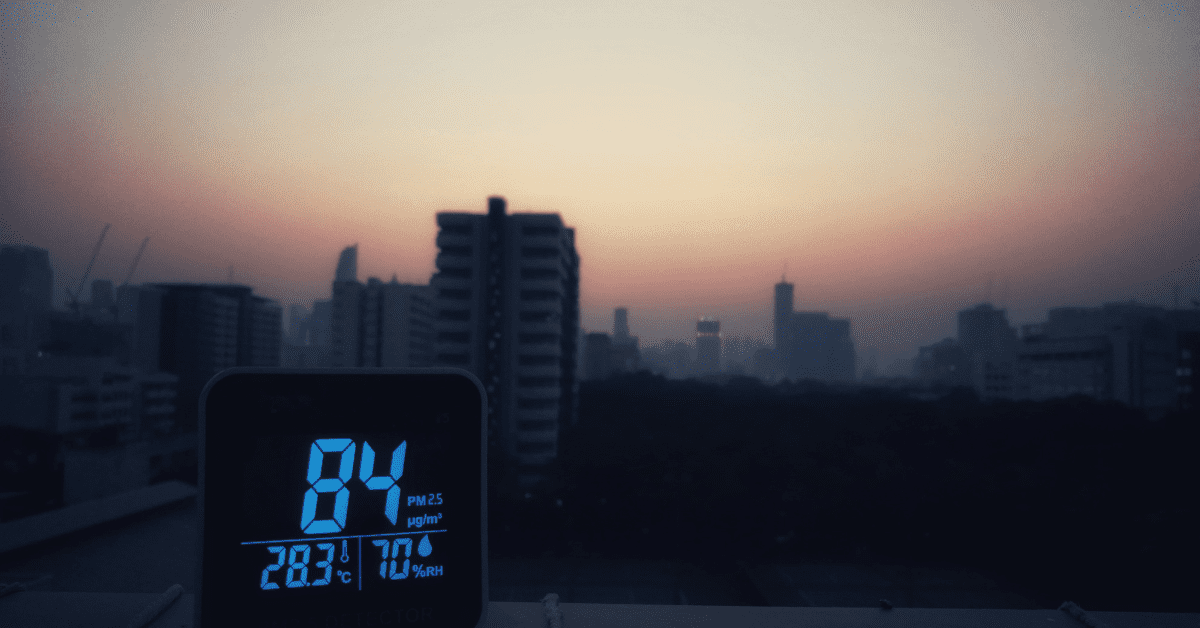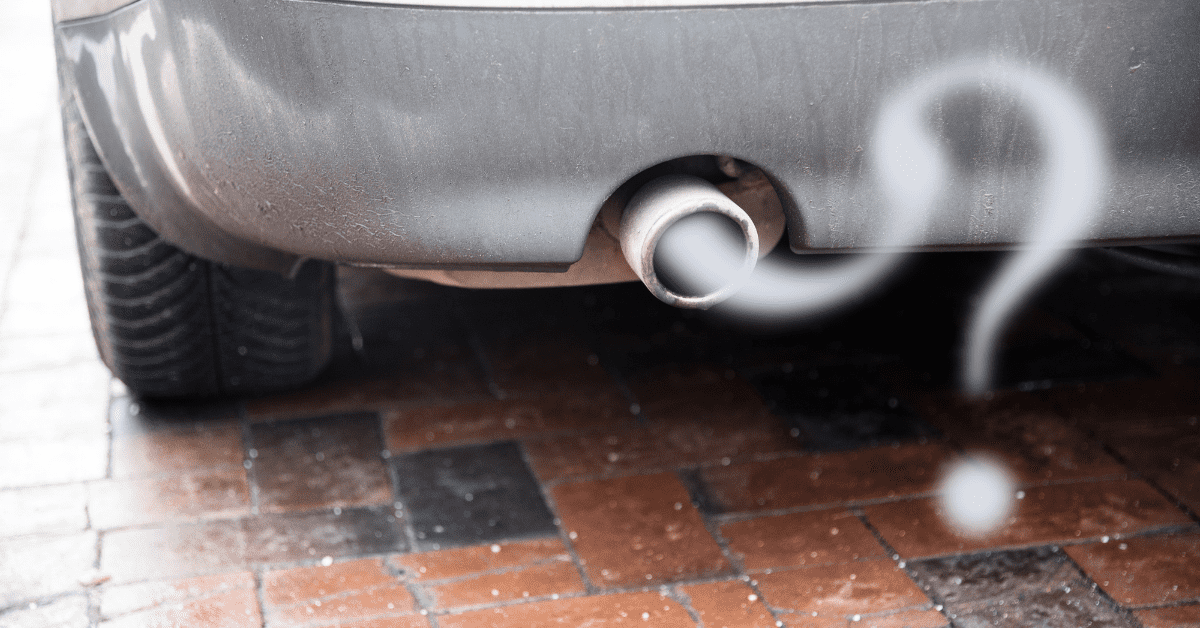Have you ever considered the effect air pollution has on you or your lupus?
What causes lupus is the question on every lupus patient’s lips.
It is a disease that can affect any organ and may appear with life-threatening symptoms. [1] So, it makes finding the underlying cause that more difficult.
Genetics appear to play a role. But science supports the idea that there are specific external triggers. One example is air pollution. Especially what researchers refer to as “particulate matter”. [2]
Science suggests that ‘particulate air pollution’ affects the immune system like inhaling silica… a dust with strong ties to systemic lupus.
It also has links with “Systemic Autoimmune Rheumatic Disease” (SARD). Alongside: [3]
- Asthma
- Chronic bronchitis
- Cardiovascular disease
- Lung and laryngeal (throat) cancers
The debate on air pollution’s role in systemic lupus is still ongoing. But early evidence suggests a connection between air pollution and lupus flares. This is what we will cover in the following article.

Does Air Pollution Affect Systemic Lupus?
A 2020 Italian study set out to answer the following question. “Is air pollution affecting the disease activity in patients with systemic lupus erythematosus?”
To do so they gathered upon the available evidence. At the time, there were only 3 studies available. With a total of 652 people subjects – spanning up to 79 months. The main findings were:
- ‘Small particulate matter’ – known as PM2.5 – can promote both anti-dsDNA and renal casts. Even if it doesn’t affect the disease activity. [4]
What is Anti-dsDNA – why is it relevant to lupus?
Anti-dsDNA is short for “Anti-double stranded DNA antibody”. It is an autoantibody that targets the DNA of a cell – hence the name “anti-dsDNA.”
This autoantibody is a hallmark of lupus. It appears when a person’s immune system fails to separate foreign invaders from its own cells. The end result being tissue and/or organ damage. The definition of any autoimmune disorder.
Anti-dsDNA is high in around 50% to 75% of those with active “lupus nephritis” – when the kidneys are the target.
The idea is that these antibodies bind to antigens that come from the kidneys. So, they show ongoing inflammation and damage to the kidneys. [5] This can then go on to create “renal casts” … which are tiny tube-shaped particles that show kidney damage via a urine test. [6]
Thus, both anti-dsDNA and renal casts are biomarkers of lupus activity.
- Daily exposure of ‘small particulate matter’ increases SLEDAI-2K scores. In addition to higher airway inflammation markers. This was is seen in children with lupus, but with no breathing issues. [7]
What is SLEDAI-2K – Why is it relevant to systemic lupus?
SLEDAI-2K stands for, “Systemic Lupus Erythematosus Disease Activity Index 2000.” Introduced and validated in 2002 to replace the original SLEDAI.
SLEDAI-2K scores symptoms over the past 28-30 days. It includes the presence of any inflammatory rash, alopecia, or mucosal ulcers. Accompanied by new, recurrent, or persistent protein in the urine. Greater than 0.5 g in 24 hours. See an example here.
Its main use is to identify lupus patients with more active disease at enrolment. So, scores reflect a patient’s inflammation levels throughout the body. With higher scores seen as a sign of a shorter life expectancy. [8]
- Those with systemic lupus who live close to a main road are more likely to present with hypomethylation of the UBE2U gene. Close was defined as living within 300 metres to a busy road. [9]
What does hypomethylation mean… and what is the UBE2U gene?
Hypomethylation refers to the loss of the methyl group in the “5-methylcytosine” nucleotide. Which account for approximately 1.5% of your genomic DNA.
This DNA hypomethylation may play a role in some diseases, such as: [10]
- Cancer
- ICF syndrome
- Facioscapulohumeral muscular dystrophy
- Atherosclerosis
- Lupus
For example, past research shows this may be the case with the “Perforin” gene. It’s shown to be demethylated and over-expressed in those with lupus. [11]
Still, this new study indicates that the “UBE2U” gene is in fact demethylated in lupus patients.
The UBE2U gene has an enzyme that is involved in the “ubiquitination” of proteins and histones… as well as DNA repair. Meaning this enzyme has a part in modifying proteins. Including those work to repair your DNA. [9]
Inadequate DNA repair may trigger an inappropriate immune response. Resulting in autoimmune disease. [12]
They need more research before confirming this connection. But these observations shine the light on a possible epigenetic change in systemic lupus patients. Poor DNA repair perhaps playing an important part.
The Answer…
The study suggests that air pollution may make your systemic lupus more active.
Air pollution – especially particulate matter – appears to create inflammation within your body. Setting off your immune system. Releasing antibodies that lead to kidney damage and symptoms throughout the body.
This affects the genes that play a role in repairing DNA damage. And may even be a key player in autoimmune disorders like systemic lupus.

Air Pollution – The invisible threat
Where is air pollution a problem?
Outdoor air pollution is a major environmental threat for us all.
The World Health Organization (WHO) show that more than 4 million deaths a year could be down to air pollution. [13] Over 400,000 of which occurs in Europe.
But many more millions suffer the ill effects due to air pollution. With those living in areas with high pollution, facing more chance of: [3]
- Heart conditions
- Breathing issues
- Chronic Kidney Disease
- Bone fractures
- Premature Birth and low birth weight
- High Blood Pressure – “Hypertension”
- Psychological Distress
The WHO also estimates that 93% of children under 15 years, breathe in air that affects their health and development. That’s 1.8 billion children! [13]
With 25% of all children in developed countries going on to develop disorders with links to immune system dysfunction. [14][15]
Could your exposure to pollution when younger have set you on your way to developing lupus?
Which air pollution affects Lupus?
Air pollution consists of: [16]
- Gases
- Organic compounds
- Metals
- Particles
Of this mixture, fine particulate matter (PM2.5) is the pollutant with the greatest link with negative health and death. [17][18]
It is also an air pollutant with a strong tie to systemic lupus. [4][7][19][20][21][22]
“Out of all the risks studied, particulate matter are those that cause the greatest burden of disease, as they are associated with respiratory, cardiovascular and neurological illnesses, among others, as well as with higher infant mortality.” “In fact, their real impact may be higher than that indicated by our estimates, as we have only taken into account their effects on infant mortality and asthma in the case of PM10, and lower respiratory tract infections in the case of PM2.5.”
– David Rojas (Lead Researcher) [23]
Breathing in these particles can promote inflammation and oxidative stress. [24][25] The outcome being systemic inflammation. This could explain the connection between air pollution and systemic lupus.
These particles could provoke changes in T cells and trigger immune cells also… when they enter the bloodstream. They may also cause higher cell death (apoptosis). Whilst lowering your body’s ability to clear the remaining debris. Therefore, triggering autoimmune issues. [19]

What is Particulate Matter 2.5?
‘Particulate matter’ refers to fine, solid, or liquid particles created by human activities. It includes dust, smoke, soot, pollen and soil particles.
Particulate matter is shortened to ‘PM’ in most literature. Usually proceeded by a number, which refers to the particle’s size. For example, PM10 signifies ‘particulate matter with a diameter smaller than 10 microns (μm).’
PM2.5 create more damage to your body because they are smaller in size.
With diameters of up to 2.5 microns, they are about one-twentieth that of human hair. Meaning that they can penetrate the lung barrier with ease and enter the circulation. Giving them free rein to impair vital organs and cause serious health effects.
Where can Particulate Matter be found?
Particulate matter is an important component of the atmosphere. It can come from both natural and man-made activities.
There are many natural sources that pump millions of tons of particular matter into the air. These include: [26]
- Volcanic eruptions
- Wind and dust storms
- Forest fires
- Salt spray
- Rock debris
- Reactions between fuel emissions
- Soil erosion
- Weathering of rocks
Man-made actions that contribute to particulate matter in the atmosphere consist of: [26]
- Fuel combustion
- Industrial processes
- Steel industry
- Petroleum foundries and stations
- Cement
- Glass manufacturing industry
- Smelting and mining operations
- Fly-ash emissions from power plants
- Burning of coal
- Agricultural waste
- Dry-cleaners
Most PM2.5 comes from combustion processes like in motor vehicles, aeroplanes, or heaters. This is what we call “primary particulates.”
But they can also form in the air as “secondary particles.” Through a series of gas-to-particle conversions with other air pollutants. Yet, this only happens in temperatures below about 5 degrees Celsius.
Narrow streets in big cities offer the perfect environment for such secondary particulates. The high pollutants emissions at street level take a while to mix with the surrounding air. This leads to high concentrations of ammonia and nitric acid in the street air. Creating ideal conditions for PM2.5 to grow from tiny nanoparticles. [27]
This may well be what was behind the London fog of 1952 and today’s Chinese haze. [28]

Which particulate matter is most dangerous?
PM2.5 can remain in the atmosphere for several days up to one week. Depending on meteorological conditions.
Also, it’s not only the amount of particulate matter in the air that matters.
The “oxidative potential” of the particulate matter may determine how harmful it is. With higher “oxidative potential” creating more inflammation. [29]
Oxidative potential refers to how easy the particulate matter can mix with highly acidic sulphate in the air. Together, they work to reduce the number of antioxidants you have in your body. This leads to oxidative damage in cells and tissues of the human body. In the end, resulting in different chronic diseases. [30]

https://doi.org/10.1016/j.freeradbiomed.2020.04.028
Examples of particulate matter with high oxidative potential are: [31]
- Wood burning, with Wildfire smoke being the worse [32]
- Metal emissions from brake and tyre wear in road traffic
- Vehicle emissions
- Small combustion engines that use petrol with oil additives, such as chainsaws, strimmer etc. [33]
- Stovetops [34]
- Summer cooking (BBQ’s etc.)
It appears that the oxidative potential is higher in the summer than in winter. With one study suggesting a 240% increase. [31] Not surprising when you consider the main sources of high oxidative particulate matter.
Think back to the smell of rubber burning on a hot day whilst out on the road. That’s particulate matter with high oxidative potential right there.
What can you do about Particulate matter?
In general, fine particulate matter is lowering with each year in the UK. It has been since the UK government began measuring PM10 and PM2.5 levels.
As of writing this article, levels of particulate matter are at the lowest level they have been. But it is 2021. So, we have been in and out of lockdown since early 2020. It will be interesting to see what the table says once we are back open and free.
On this topic, the government could do more by planting trees… as they remove fine particulate air pollution. Thus, saving lives. [35] Especially around busy roads, where particulate levels are always higher. [36]
They can also attempt to ensure roads are as clean as possible and in good repair. This makes a significant contribution to reducing the problem of fine particulate emissions. [37]
With that said, you can be pro-active against particulate matter by:
Driving Smart; Driving Less
We all need a mode of transport. But, petrol motors – including diesel vehicles – are key sources of fine particles. Sadly, having a horse and carriage isn’t practical for most in this day and age. Plus, it would be cruel to lock the horse in the garage. Yet, we all have the ability to:
- Walk, cycle, take public transport and carpool whenever possible
- Pay attention to service schedules for your vehicle – including tyre wear and tear
- Drive like you’ve got all day… easy on the idling, stick to the speed etc.
- If you have the funds for a ‘cleaner’ car, then opting for a hybrid or electric car may be a good option. Failing this, replacing your older car with a newer one should still be better for all

How to protect yourself against fine particulate matter?
It is impossible to avoid particulate pollution. But there are some steps you can take to protect yourself.
Here are 5 steps you can take to protect yourself against fine particular matter:
1. Know the Levels
First, you need to know when and where levels are high. One way in doing so is to check the World Health Project’s air quality index at WAQI.info. When checking, remember green is good.
When levels are high, keep your windows closed and limit your time outdoors. This includes exercising… since this will increase your breathing rate and your exposure to pollutants.
2. Wear a Face Mask
Chinese nationals, who many live in pollution, are notorious for wearing a face cover. Even before COVID-19 measures went worldwide.
Science supports the use of masks to protect against particulate matter. But the mask must be able to filter out PM2.5. Also, make sure it fits your face well, with no air gaps. [38][39]
Cloth masks may be more fashionable, but they offer poor protection. [40] You will be better off with a disposable surgical mask, or an N95 face mask.
3. Don’t treat Smoke as a Joke
Smoke of any description is no joke when it comes to your health.
For example, cigarette smoking is one of the top 10 contributors to death and disease. Smoking one cigarette exposes the human respiratory tract to between 10,000 and 40,000 mg of PM. [41]
Plus, iron may build up in the throat and lungs of smokers due to particulate matter in the smoke. [42] This of course will contribute to disease.
Sorry to say, but e-cigarettes are not a good substitute either. They can also release poisonous substances – including PM2.5. [43]
Wood smoke is no better… it is a main source of PM2.5. [44] So:
- Avoid secondary cigarette smoke – do not let anyone smoke near you
- Limit your use of wood burners/stoves
- Use your hood oven when cooking on a gas stove – ensure it is well ventilated
- Do not use candles or incense burners: candle burning for a few hours will increase your PM2.5 exposure. [45] As will incense burning. [46]
4. Lean towards Green
If your budget stretches far enough, one option is to move to a ‘greener’ area. One that has plenty of green space and trees to help soak up the particulate matter. Of course, this is not possible for everyone. So, a happy medium may be to move to a quieter part of town, as far away from a main road as possible.
If moving home isn’t an option, then use your right to vote. Try to elect an official who understands how much of a threat pollution is. Besides the need for green spaces.
In theory, this would be the ‘Green Party’ here in the UK. But every local candidate has their own manifesto.
5. Get a Helping HEPA Purifier
You may have seen “HEPA” on air purifiers and other products before. HEPA stands for “high efficiency particulate air.”
HEPA filters are physical filters designed to clear out at least 99.7% of particulates that are 0.3 microns or larger in size. So, in theory, this should cover most particulate matter floating around your home.
HEPA filters can lower the number of breathable particles in your home. [47][48][49] The reductions range from 29%-60% in these specific studies though. With one study showing the filter to be 50% less effective after 5 months. [48] This highlights the importance of preventing particles from entering your home. Especially when levels are high outside. As well as replacing the HEPA filter every 3-4 months.
You can also buy vacuum cleaners with HEPA filters to prevent dust and such, being re-released.
There are many options on the market nowadays. You need to ensure that you’re buying a “True HEPA filter”. This means it is certified to do what it says on the box.
Can I remove Particulate Matter from my body?
Particulate matter has a strong potential for absorbing toxic metals. Heavy metals themselves can be inhaled and have nasty effects on your health.
In comparison to coarse particulate matter, PM2.5 has a greater surface area per unit mass. This allows them to gather heavy metals more effectively. Amplifying the danger that particulate pollution poses to you – with or without lupus.
So, it is important to avoid particulate matter as much as possible. But, for many of us it may be too late. This is where “chelation therapy” could come into play.
Chelation Therapy
The term chelation comes from the Greek word “chelate” which means claw.
The idea is that these “chelators” bind to metal ions like a claw. Helping to remove them from your body.
Extensive experience demonstrates that acute and chronic human intoxications with a wide range of metals can be treated with considerable efficiency by the administration of a relevant chelating agent. [49]
Likewise, taking antioxidants (natural or synthetic) or with another chelating agent seems to improve the removal of toxic metals from the system. As well as better and faster clinical recoveries in animal models [50]
However, antioxidants come with their own concerns. So, click here to learn more about the best source of antioxidants.
Then chelating agents have criteria to meet before you can consider taking them. That is:
- Greater affinity for the toxic metal
- Low toxicity
- Ability to penetrate the cell membrane
- Rapid elimination of metal
- High water solubility
These will be discussed in more detail in a future article.
Pingback: Why is Lupus more Common in Certain Ethnicities? -
Pingback: What Causes Lupus? (An up-to-date answer in 2021) -
Pingback: Phthalates: Hard to say; Harder to Avoid (But here's 3 Steps you can take) -